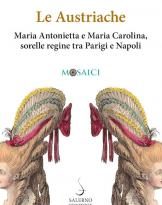I have read the one-volume version of the version, published by Newton Compton in the 2009 (third edition), but the first reduced edition is 1925.
The book is really interesting and deserves to be read carefully and thoroughly for several reasons that I will try to expose in the few lines that follow.
Firstly, every scholar of popular traditions can not help but know this anthropologist and his work, this fact is clearly written and highlights similarities and differences between beliefs of people often very distant from each other. The main topics are religion and magic as factors underlying the beliefs of peoples.
Secondly, the book also speaks of Italy, in particular of Nemi, in Lazio. In fact, Frazer tries to understand the origin of the rites linked to the woods of Diana and to the "king of the forest".
The king of the wood was none other than the priest of Diana, whose position was handed down in a particularly bloody manner. The suitor had to cut a branch of a particular sacred tree in the forest and then kill the priest in charge. In this way he could take his place until someone else would have had the strength to try his luck.
Frazer puts forward the hypothesis that the custom of putting sovereigns to death is something quite common in antiquity and that gave rise to this terrible custom of the succession of the priest of Diana. In fact, he says: "with regard to the crucial problem of the custom of putting sovereigns to death at the end of a certain period of time or whenever their strength or their health show signs of decline, the evidence that confirms how this custom was widely diffused. "
But let's see what this priesthood consists of and try to get to know Diana and her myth better.
"It is said that the cult of Diana in Nemi was established by Oreste who, after killing Toante, king of the Churonesian Tauric (the Crimea), took refuge in Italy with his sister, bringing with him the statue of Diana Taurica hidden in a bundle of wood. "
Oreste did not bring with him the ritual attributed to Diana Taurica, known to anyone who read the classics.
"It is said that every stranger who came to those shores was slain on the altar of the goddess.But carried into Italy that ritual took on a less bloody form.In the shrine of Nemi grew a tree which was forbidden to break the branches. A fugitive slave was allowed to seize one of his branches, and if he succeeded in the enterprise he would acquire the right to fight with the priest and, if he killed him, to reign in his place with the title of king of the forest (Rex Nemorensis). "
So here is that a bloody mass rite, all foreigners who landed were sacrificed, is transformed into a symbol, a clash between two to honor the goddess of blood.
"According to what the ancients said, the frond was that branch of gold which, by order of the sibyl, Enea seized before facing the perilous journey into the world of the dead."
The fugitive slave represented the escape of Orestes from the Chersonese, the combat with the priest represented the sacrifices to the goddess.
It seems that this bloody way of succeeding in the priesthood was still the vigor of the imperial age.
Diana was revered essentially as a huntress and as a deity who gave her offspring and an easy birth. Fire was one of the predominant elements of the ritual. But let's see what the ritual consisted of:
"during the annual celebration of the 13 August, during the warmest period of the year, the grove was lit by a myriad of torches whose glow was reflected in the waters of the lake, and throughout the Italian territory every family celebrated that sacred rite Bronze statuettes found in the enclosure, depict the goddess holding a torch in her raised right hand, and the women whose prayers had been answered, went wreathed and with a lighted torch to the sanctuary to dissolve the vow [..] during the party annual goddess hunting dogs were garlanded and not harassed wild animals [..] young people celebrated a purifying ceremony, went the wine and the banquet consisted of goat meat, boiling sweets served on vine leaves and apples still attached in clusters to their branch. "
The sanctuary of Diana also gave space to two other minor deities, the first, Egeria, "the nymph of limpid water", whose waters were thrown into the lake of Nemi in the locality of Le Mole. She also helped women in childbirth.
"It tells the story that the nymph had been the bride, or the lover, of the wise King Numa and that he joined her in the secret of the sacred wood [..] The ruins of spas discovered inside the sacred enclosure and the many terracottas reproducing various parts of the human body suggest that Egeria water was used to heal the sick ",
who thanked the divinity, leaving in the temple a terracotta object of the form of the once sick and then healed limbs.
The second minor deity was called Virbio. Let's see who was:
"Legend has it that Virbio was Hippolytus, the young Greek hero, chaste and handsome, who had learned the hunting art from the centaur Chiron and spent his life in the woods hunting for beasts, having as his only companion the virgin hunter Artemis (the Greek Diana). "
The myth tells that Ippolito disdained all women, adored only Artemis, his companion. For this reason he incurred the wrath of Aphrodite, who, in angered manner, made sure that Fedra, Hippolytus' stepmother, fell in love with him and when he was rejected, accused him unjustly in front of his father Theseus. Theseus asked his father Poseidon to punish Hippolytus. Poseidon sent him a fierce bull born from the waters while Hippolytus was in his chariot. The runaway horses dragged him into their run and Hippolytus died. Artemis did not give up and asked Aesculapius to bring him back to life thanks to his skills as a healer. Jupiter, enraged by the deed of Aesculapius, confines the doctor to Hades. Artemis / Diana manages to hide Hippolytus from the wrath of the gods by letting the fog descend and disguising it as an old man and then taking him to the valley of Nemi, in the distant Latium, so that he might live there hidden under the name of Virbio.
"There is no doubt that the St. Hippolytus of the Roman calendar, dragged to death by the horses the 13 August, day dedicated to Diana, is none other than the Greek hero of his namesake who, twice dead as a pagan, was happily resurrected as Christian Saint "
In this review I told only one of the myths collected by Frazer in his work, the Golden Branch.
An interesting book that can not miss in the personal library.
Alessandro Rugolo












